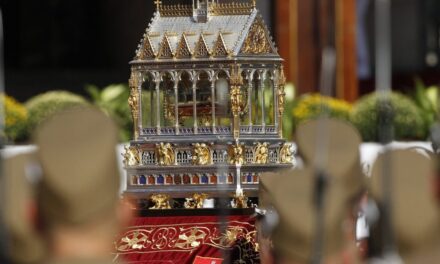"A nation that does not know its past does not understand its present, and cannot create its future!"
Europe needs Hungary... which has never let itself be defeated.
History
When the government moved its seat to Debrecen against the attack of Windischgratz, Artúr Görgey marched north from Pest, saving a significant part of the army. On January 5, 1849, Görgey issued a statement in Vácott in which he openly insisted on the April laws. In it, he demanded the restoration of the honor of the officer corps, that is, he wanted to preserve the unity of the officers and the army. The Vác proclamation made it possible for officers sworn to the emperor and king to decide. Those who wanted could leave, but those who stayed had to fight heart and soul for Hungarian laws. Leaving Vác, the army spent the winter in the Highlands in order to fight against the imperial forces in the spring. During its journey to the highlands, the army had to face continuous attacks by the imperial troops.

The Hungarian National Army, formed almost from nothing in 1848-1849, was a unique unit in the world. Not only the number of people, the weaponry, the fighting skills, as all these would not have been sufficient for success. However, the spirit of the army, its combat morale, and the talent of its leaders raised the national defense to great heights. The technical equipment of the army alone would not have been sufficient to carry out the campaign. It was the only revolution in Europe that needed the strength of two great powers to put it down. The Habsburgs were saved from defeat and shame only by the "kiss of the Warsaw hand", i.e. the tsar's help.


The most significant event of the winter campaign was the battle near Igló, on February 5, 1849, at Branyisskó, which ended with the victory of Richard Guyon. The spectacular military success achieved over the Austrian general Franz Deym made it possible for the Hungarian army from the Danube to break through to the Great Plain, where it then joined the main force at the Tisza in the spring.

The Battle of the Chapel (February 26-27, 1849)
The Constitution of Olmütz On 22 January 1849, Mór Perczel won a victory at Szolnok, and György Klapka won a victory at Tokaj on 31 January 1849 over Schlik's imperial troops. Meanwhile, Windischgratz set out to occupy the new capital, Debrecen. Leaving Pest, he attacked the Hungarian army that was still gathering at Kápolna. The quick retreat saved the Hungarians from a bigger failure, for which the already unpopular Polish Henrik Dembinszky was responsible. After the chapel, he was also replaced as leader.

Windischgratz overestimated his success in the Kapolna battle, and sent the following report to the ruler, who was still fleeing Vienna and staying in Olmütz: "I found the rebel herds at Kapolna in great numbers, scattered them and destroyed most of them, the rest fled across the Tisza. I hope that I will be in Debrecen in a few days, and I will take control of the nest of partisans."

The court was encouraged by the report from Hungary. József Ferenc issued the so-called Olmütz constitution on March 4, 1849. This openly refused the laws of April, and further reduced our country to a province of the empire. He liquidated the results of the revolution, essentially obliterating Hungary's hard-earned independence. The constitution stated that all citizens of the empire were subject to the uniform Austrian civil law. He also stated that the person of the emperor is sacred and inviolable.
Transylvanian operations (February 9 – March 15, 1849)
The Polish freedom hero József Bem, who came to Hungary in disguise at the invitation of Kossuth, proved to be an excellent general. Young Bem, an 18-year-old artillery officer, took part in Napoleon's campaign in Russia in 1812. The legendary general of the Polish War of Independence in 1831 arrived in Hungary at the best moment.
The Hungarian military leadership entrusted him with the operations in Transylvania, which Bem apó, as his soldiers nicknamed him, succeeded with tenacious organization. The first big battle took place at Piski on February 9, which started the series of victories of the Hungarians. Bem's much-quoted phrase was uttered at the Piski bridge, with which he encouraged his soldiers. "Forward, Hungarian! No bridge, no home!" Bem's tactics were based on a series of rapid, surprise marches. Bem trusted the Székely National Guards the most, he could rely on them. His soldiers adored him, as did Petőfi, who was his adjutant. Our famous poet wrote about him in his poem The Transylvanian Army: "What wouldn't we win? Hizz Bem is our leader,/ The old champion of freedom!” Among Bem's helpers was Áron Gábor from Székely, the master cannon caster, who was one of the keys to the victories. On March 11, 1849, Bem took Szeben back. And by March 15, in accordance with his promise, in honor of the one-year anniversary of the revolution, he expelled the enemy from the land of Transylvania. Only Gyulafehérvár and Déva remained in the hands of the Habsburgs.
 The great battles of the glorious spring campaign
The great battles of the glorious spring campaign
At the same time as the successes in Transylvania, coordinated attacks also began on the Hungarian battlefields. The commander-in-chief was Artúr Görgey, and György Klapka played the main role in developing the war plans. The month that passed after the Kapalna battle was a period of waiting, as neither the imperial troops nor the home army launched a serious attack. The internal crisis of the Hungarian military leadership was not resolved even after the replacement of Dembinszky. After all, Antal Vetter, who had great professional knowledge, was awarded the position of general manager on March 1, 1849, but had to resign due to illness and conflicts of interest. After that, Görgey and Klapka became the two defining figures of the army.


Battle of Szolnok (March 5, 1849)
After his campaign in the highlands, Görgey successfully broke through to the Upper Tisza. Here he united with György Klapka's corps. The Tiszán played a key role as the Szolnok bridgehead, which was besieged on March 5 by János Damjanich and Károly Vécsey, who were marching from the Southern Region in the direction of the main army. In the battle between Szolnok and Abony, Damjanich's white-feathered Szeged and bloody Sipka's Kassa battalions were successful. It was the first successful battle of the spring campaign.
 Battle of Hatvani (April 2, 1849)
Battle of Hatvani (April 2, 1849)
According to the famously grandiose saying of Imperial General Schlik, at the head of his troops he "went on a rabbit hunt to the Hungarian camp" to distract the rebels. The imperial army from the direction of Csány in II. Hungarian corps threatened to encircle him. Meanwhile, an artillery duel began. The emperors were still able to cross the Zagyva, but the Hungarian National Guard secured the line of the Zagyva for the marching Hungarian army

Battle of Tápióbicske (April 4, 1849)
Two days after the Hatvani battle, on April 4, under the direction of Görgey, Klapka and József Bayer, the army advanced from Nagykáta in the direction of Tápióbicske. They were under the impression that Jellasics had withdrawn from the region, which was true. They just didn't know that in the meantime another Austrian force had entered the area. The imperialists shot the bell ringer and his son, who wanted to give a signal to the Hungarian army about the Austrian military movements.

A memorable scene of the battle was when the famously good swordsman Hermann Riedesel challenged the Hungarian commander Alajos Sebő to a duel. Riedesel has never lost a duel, but this time Alajos Sebő mortally wounded the Austrian champion. This gave the Hungarians new impetus and strength.

However, the Austrian forces were superior, and Klapka was almost captured. However, Damjanich's relief army arrived in the early afternoon, and Görgey also headed towards Tápióbicske. He knew this would be a decisive battle in the campaign. However, a tragicomic scene took place at the famous wooden bridge, when two competing Hungarian battalions attacked each other in order to reach the bridge sooner. Károly Földváry mastered the dangerous situation when he grabbed the flag of the other team, so they crossed the bridge together and in an orderly manner.

Battle of Isaszeg (April 6, 1849)
The next victorious battle, also the clash that mobilized the greatest forces of the campaign, took place on the border of Isaszeg. At the head of Windischgratz's army of 55,000 men, against his 214 guns, Görgey was able to line up an army of 47,000 men and 198 guns. The Austrian forces formed a front line 50 km wide, which, however, fell apart after mobilization. Görgey rather combined his forces in order to be able to strike. Nevertheless, the battle was even. Klapka left the battlefield at the final moment, his nerves giving up. The resulting chaotic situation was saved by Görgey, who steered the teams in the same direction and wanted to decide the outcome of the battle that very evening. In this case too, the talented general saw the entire battlefield, thanks to which the Hungarians won another brilliant victory.

Battle of Vác (April 10, 1849)
The army leaving Isaszeg headed for Komárom to liberate the key fortress on the Danube. The solution was first sought at Vác. Damjanich III. at the head of his corps, he wanted to divert General Götz's corps here, which was marching towards Komárom to defend the fortress. The attack almost ended in failure, but Károly Földváry - while two horses were shot from under him - led the Hungarian national guards to victory again. The imperial army was defeated, and General Götz himself fell in the battle of Vác.

The Declaration of Independence (April 14, 1849)
After the Battle of Vác, the political and military leadership saw the time to re-declare independence. This is how the Declaration of Independence was born in the Great Church of Debrecen on April 14, 1849. In the Rákóczi War of Independence, after 1707, the Hungarians once again announced the dethronement of the House of Habsburg. On this day, in the Great Church in Debrecen, Lajos Kossuth was elected governor-president, and Hungary became an independent, independent country again. Bertalan Szemere was appointed head of the new, legal government.

Excerpt from the statement:
"...this House of Habsburg-Lorraine is hereby forever excluded and excluded from its rule over Hungary, Transylvania united with it, and all the countries, parts and provinces belonging to it, in the name of the nation, and excluded from the territory of the country and from the enjoyment of all civil rights. As he is hereby declared dethroned, excluded and exiled.”
Battle of Nagysalói (April 19, 1849)
Five days after the historic event in Debrecen, the battle at Nagysalló, north of the upper reaches of the Danube, took place. In a series of victories, the home army, fighting enthusiastically, ensured the military and political successes of the spring campaign here.

After Nagysalló, the Hungarians prepared for the key match of the winning streak, when they set their goal of retaking Komárom. Even Kossuth and Görgey agreed on this, between whom the antagonism and strife remained constant during almost the entire period of the freedom struggle.
The first battle of Komárom (April 26, 1849
Vienna also recognized the importance of Komárom. It was then that the famous "hand kiss in Warsaw" took place, when Ferenc József asked Russian Czar Nicholas I in Warsaw for help in defeating the Hungarian freedom struggle. The first battle took place on April 26, when the Hungarians occupied Újszőny and the ramparts built on the banks of the Danube. The Austrian superiority was equalized by the repeated attacks of Klapka, Görgey and József Nagysándor. The imperial troops were forced to retreat in the direction of Győr and Vienna. In addition to the Hungarian loss of 800, the imperialists left 2,000 dead on the battlefield.

The weeks following the Komárom battle are among the most glorious chapters in Hungarian military history. Görgey's proclamation dated April 29 in Komárom summarizes the results of the spring campaign as follows:
"My comrades! Less than a month ago, we stood at the Tisza river - casting doubtful glances at our even more doubtful future. Who would have thought then that in a month we would have crossed the Danube and the greater part of our beautiful country would have been freed from the wrath of an ugly dynasty that broke its oath. (…) You have won - you have won seven times in a row; and you must win from now on. Remember it when you rise to battle again! (...) a nation whose sons are similar to the heroes of Szolnok, Hatvan, Bicske, Isaszeg, Vác, Nagysarló [correctly: Nagysalló] and Komárom cannot be taken prisoner any more; even in the most terrible cannon fire, I only have one motto for you: Forward, my comrades! always forward! Remember him when you rise to battle again!”
Recapture of Buda (May 21, 1849)
The last event of the spring campaign was the siege of Buda, which caused a lot of controversy beforehand. What should be the next step after taking back Komárom? The destruction of the Austrian army fleeing towards Vienna, or the recapture of the capital, Buda? The general staff of the Hungarian army that had crossed the Danube finally decided that the recapture of the capital would be a fitting end to the campaign. The castle of Buda was protected by the well-trained general Hentzi, who was also ready to blow up the newly completed Chain Bridge.

The siege and the fight between the attackers and defenders continued continuously, as a result of the regular clashes, General György Kmety attacked the water works on May 5. In response, Hentzi bombarded Viziváros, and when the Hungarians retreated, the Austrian forces broke out of the castle on May 11. The first attack failed, but the second eruption was successful.
In response, Görgey began methodically shelling the walls and prepared the final assault on May 18.
The decisive attack took place at dawn on May 21 .
The three-week siege ended on May 21, 1849, at 7:00 a.m., when the Hungarian army took the castle after a well-prepared assault. After the successful siege, Görgey rode up to the Castle. He ordered his Redskins to stand ready near the Castle and wait for the order.


"Forward, forward with the flag in your hand, / The whole of Europe is coming after you, / You, my country, are now the leader of the world... / What a great role, how inspiring!"
Petőfi wrote these lines on May 21, 1849, the day he captured Budavár. With this triumph, the national army reached the zenith of the glorious spring campaign.

The significance of the glorious spring campaign
The spring campaign is of outstanding importance not only in Hungarian, but also in European and even world history. After all, the revolution that took place on March 15, 1848 also had an unparalleled result, when they abolished the centuries-old rule of the Habsburg power. Then, within a short year, they set up an army capable of striking, mostly receiving only basic training. What is this due to?
We can give no other answer to this than that the simple peasant boys who defended their country, their wider and narrower homeland, the thousand-year-old Hungarian virtue and the martial knowledge hidden in their genes, lined up on the battlefields. Despite this, the successes could not have been achieved without the knowledge, flexibility and local knowledge of the Hungarian military leadership. However, the successful campaigns created the resources that made it possible to continue fighting. The support of the government and the state was of enormous importance, headed by Lajos Kossuth, who had unparalleled enthusiasm and work ethic.

Author: Ferenc Bánhegyi
Title image: Sons of a Stone-Hearted Man movie screen shot
The parts of the series published so far can be read here: 1., 2., 3., 4., 5., 6., 7., 8., 9., 10., 11., 12., 13., 14., 15., 16., 17., 18., 19., 20., 21., 22., 23., 24,, 25., 26., 27., 28., 29/1.,29/2., 30., 31., 32., 33., 34., 35., 36., 37., 38., 39., 40., 41., 42., 43., 44., 45., 46., 47., 48., 49., 50., 51., 52., 53., 54., 55., 56., 57., 58., 59., 60., 61. 62., 63., 64., 65., 66.















